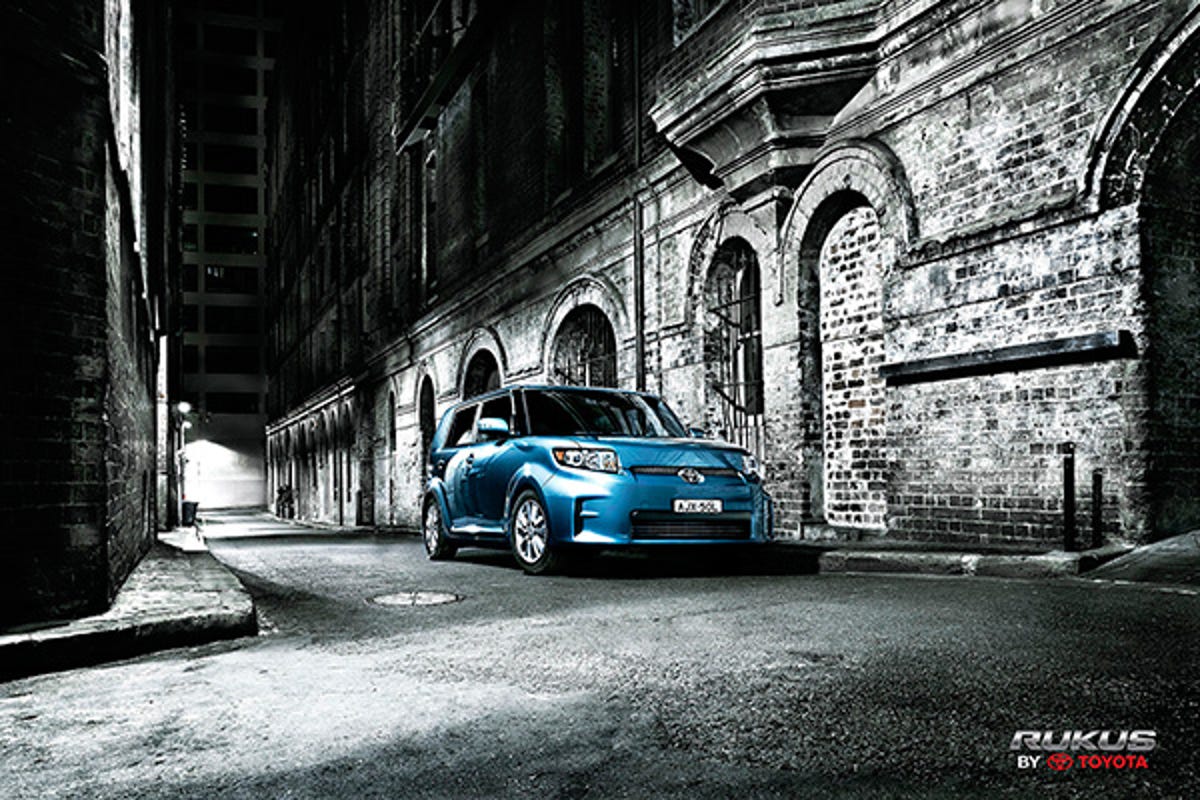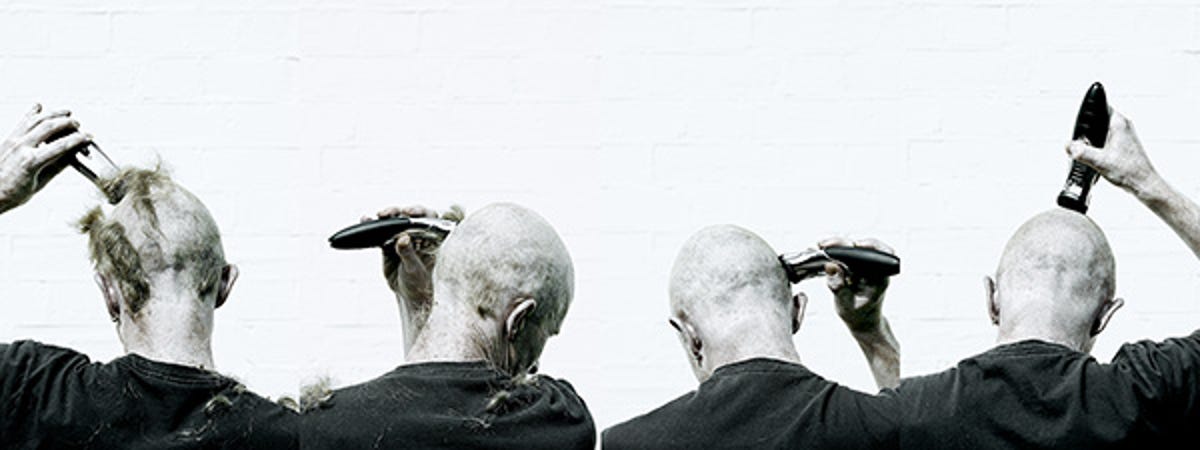
Toyota Rukus Alley Way
Exposure Pro is a series looking at the work of leading professional and artistic photographers.

(Credit: Urs Buhlman)
Name: Urs Buhlman
Biography: born in Zurich, Switzerland, Urs has had an interest in imagery from an early age. He spent his early career travelling around Australia shooting commissioned annual reports. In 1988, Urs established his own photography business committed to providing high-end advertising photography, specialising in automotive and location assignments.
Over the past 18 years Urs has developed his own image library consisting mainly of landscapes and seascapes. More recently, he has concentrated his attention on the development of conceptual stock images. His solo exhibitions have been held at the Bathers' Pavilion in Balmoral and NSW Parliament House, Sydney, Australia.
Canon AIPP Australian Advertising Professional Photographer of the Year (awarded four times); Canon AIPP Australian Professional Photographer of the Year (2006); D&AD, Gold Folio, Caxton, NY One Show awards; Capture Magazine Australia's Top Advertising Photographer (2008, 2009 and 2010).
CNET Australia: how did you first get started in photography?
My father was a graphic designer in Switzerland at the top of his game. From a very early age I was surrounded by giants of the visual communication industry. I was a sponge. Why and how I started, I can't explain, except it was a natural, partly genetic progression. It wasn't work for my father, it was a lifestyle. Photography doesn't end or start, it's always there or it isn't.
What are some of the challenges unique to advertising/product photography?
I think with advertising, it's accountability. It's not just about you, there's a lot of people that are a part of this huge process, which filters all the way down to media buyers and car dealers. The deadlines, there's no flexibility in that. Your technique has to be bulletproof because there are things like weather that can get in the way. I've shot in 240km/h winds. I've never had a re-shoot, and that's probably the thing I'm most proud of.
Therefore, the way I dealt with that was to give a product that was at least what the client expected — if not better. "You're only as good as your last job" is very true, and even more true for our industry specifically as advertising photographers. Hence generally they get paid the most and they are the best photographers.
I did eight and a half years of assisting; most photographers only do half a year or are self-taught. When I started shooting car ads at 28, I had a lot of experience behind me because the photographers I worked for, I did everything except put my name on it. That's what an assistant does. I find that this mentality and level of education doesn't exist in any other field of photography apart from advertising. The amounts of hats an advertising photographer has to wear is astronomical.
My father taught me how to come up with a concept — I'm not saying I'm any good, but I like doing it.
How much of your commissioned work is based around your client's vision for the final outcome?
In any photography field, you build a reputation right from the start if you're smart. You push who you are, and very quickly people start realising "well, Urs likes to push his way of looking at things". That works for you and against you: for you that means the work you get you're allowed to put a certain amount of your heart into it. But you can lose jobs because art directors might not like that sort of attitude. I push for a really good product, and that's hopefully what people remember.
How do you keep your client's product (like a car) under wraps when you are shooting a big campaign, possibly in public spaces?
Confidentiality. If it is a new car, I have at times been asked to sign a confidentiality agreement, and that's very reasonable. Australia is such a small market — even though it's very competitive. Because of the internet we can get information from Germany if the car originates from there.
The process of a shoot is: you get a brief, I find a location, I get my producer to let the authorities know if I need to use a particular stretch of road, that Urs is going to be poking around doing snapshots and location shots to show his client so they can look and we can choose together. Once the client agrees, we contact the owner (council or private road owners) and work under their conditions.
How has the analogue to digital switch affected you?
I can only say I feel for the people who weren't in the analogue days. They have been taught photography in a way that is different. I think the whole digital system (including Photoshop) has been built off darkrooms. Even though there are a lot of younger photographers who are great "software photographers", a lot of the stuff I see can be done in-camera.
The transition was only difficult because I was so at hand with using analogue systems. It was like a part of me. I wasn't that young when it hit either. A lot of my friends did not continue, it was too much for them. I was at that dangerous level of age and experience.
Digital has levelled out the technique of photography. The difference is the conceptual side; how much a person can put in there visually. I've got to say, as a photographer, the best feeling you can ever have is reinventing yourself and coming out smiling.
Your still life, urban landscapes and stock images are highly stylised and the lighting you use is quite cinematic — how do you achieve this effect?
The road photographers I compete with don't give their images a look — I do. They shoot thousands of pictures — I don't. I spend time grading a picture. The negative is, art directors might not like it. They're not that retouched, honestly. I don't spend a lot of time shooting, most of the road images [on the website] we shot under three minutes. I remember with Milos (my assistant) on the first day, he was unpacking and I was packing up. You get to know light and locations very quickly. Also, they're dangerous roads — you don't want to be there too long. We've got to stick a camera out in the middle of that and do an HDR, 62 images to make one file.
What's your philosophy when mentoring emerging photographers?
When I was first interested in photography, there were hundreds of studios where you could start and have a home, feel like you were part of a team and have an apprenticeship. Those places are few and far between now.
As a photographer, mindset is important to me. I teach my assistants what envy is, because if they're good, they are going to get it. If you've got nothing to steal, nothing that people want, they're not going to be envious. When you think you have a photographer friend, that word "envy" becomes very tricky. These are the things good professional photographers will have to face.
More of Urs' work can be viewed on his website, www.ursbuhlman.com. Urs is one of Canon's EOS Masters.
Toyota Service Advantage RAV
Rocky Plains, Snowy Mountains Highway
Sydney Water Dirty Wash Basin


